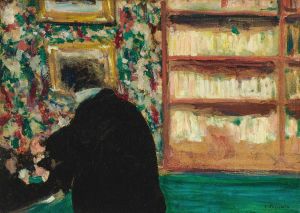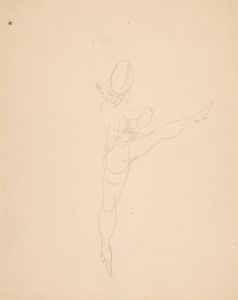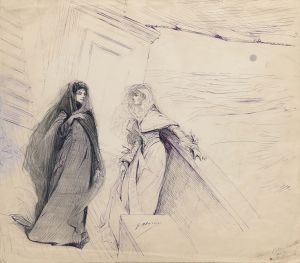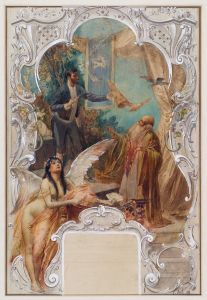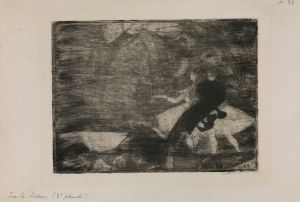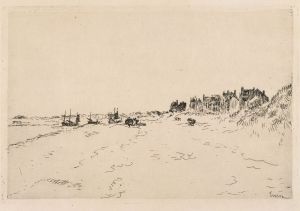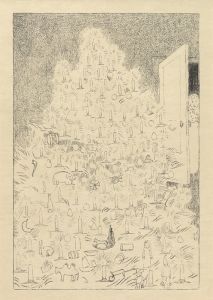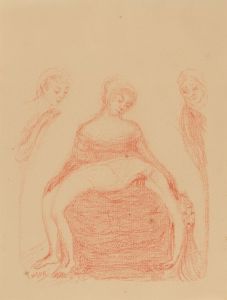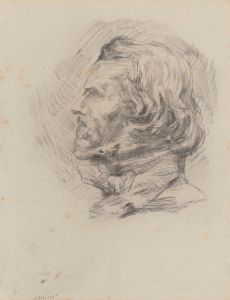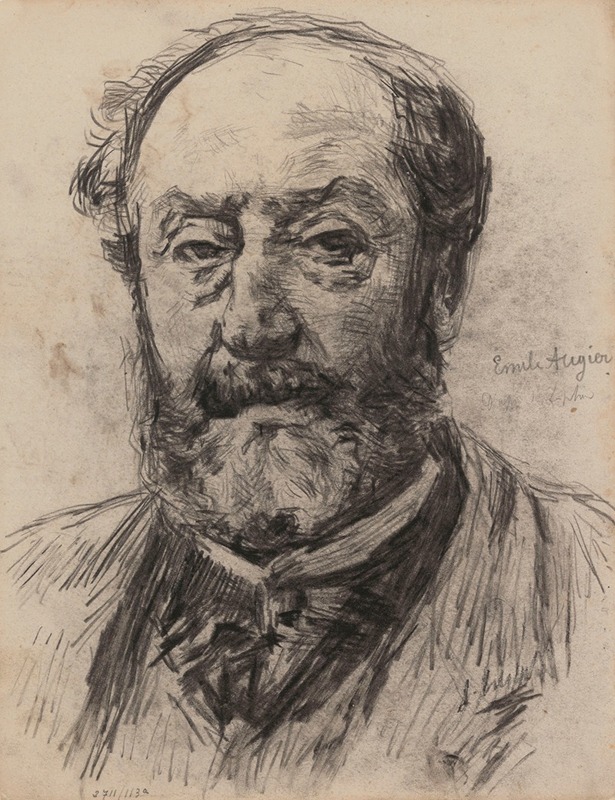
The Playwright Emile Augier
A hand-painted replica of James Ensor’s masterpiece The Playwright Emile Augier, meticulously crafted by professional artists to capture the true essence of the original. Each piece is created with museum-quality canvas and rare mineral pigments, carefully painted by experienced artists with delicate brushstrokes and rich, layered colors to perfectly recreate the texture of the original artwork. Unlike machine-printed reproductions, this hand-painted version brings the painting to life, infused with the artist’s emotions and skill in every stroke. Whether for personal collection or home decoration, it instantly elevates the artistic atmosphere of any space.
"The Playwright Emile Augier" is a painting by the Belgian artist James Ensor, created in 1901. Ensor, known for his unique and often macabre style, was a prominent figure in the Symbolist movement and played a significant role in the development of modern art in Belgium. His works frequently feature fantastical elements, grotesque figures, and satirical themes, reflecting his critical view of society.
James Ensor was born in Ostend, Belgium, in 1860 and spent most of his life there. He was a prolific artist, producing a vast array of paintings, drawings, and prints. Ensor's work is characterized by its bold use of color, intricate detail, and imaginative subject matter. He was influenced by a variety of sources, including Flemish painters, Japanese prints, and the works of earlier artists such as Hieronymus Bosch and Pieter Bruegel the Elder.
"The Playwright Emile Augier" depicts the French dramatist Émile Augier, who was a significant figure in 19th-century French literature. Augier was known for his comedies and dramas that often explored themes of morality, social issues, and human nature. He was a member of the Académie Française and received numerous accolades for his contributions to French theater.
In Ensor's painting, Augier is portrayed in a somewhat exaggerated and caricatured manner, which is typical of Ensor's style. The painting captures Augier with a distinctive expression, possibly reflecting Ensor's interpretation of the playwright's personality or the themes of his works. The background and surrounding elements in the painting may include symbolic or fantastical elements, consistent with Ensor's tendency to infuse his works with layers of meaning and visual complexity.
Ensor's choice to paint Augier could be seen as a tribute to the playwright's influence and significance in the literary world. It also aligns with Ensor's broader interest in depicting notable cultural figures and exploring the interplay between reality and imagination. The painting is an example of Ensor's ability to blend portraiture with his unique artistic vision, creating a work that is both a representation of a historical figure and a reflection of Ensor's distinctive style.
"The Playwright Emile Augier" is part of Ensor's extensive body of work, which has been celebrated for its originality and impact on the art world. Ensor's paintings are held in numerous prestigious collections and museums around the world, and his influence can be seen in the works of later artists who were inspired by his innovative approach to art.
Overall, "The Playwright Emile Augier" exemplifies James Ensor's talent for combining portraiture with imaginative and symbolic elements, resulting in a painting that captures both the essence of the subject and the unique perspective of the artist.





